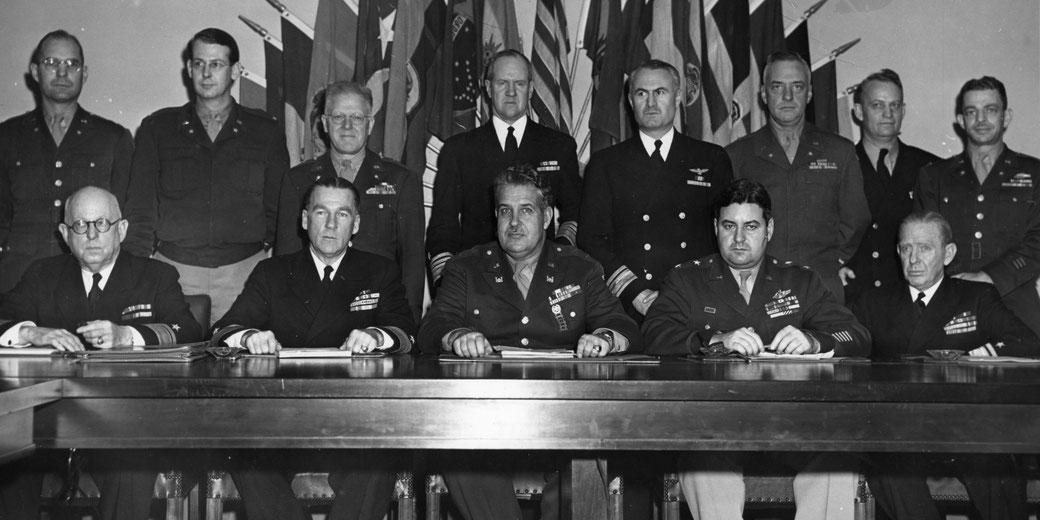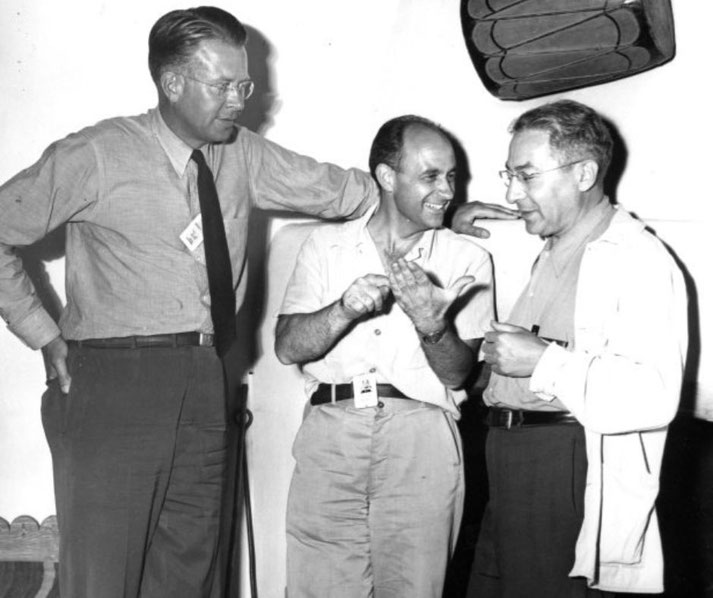Why did scientists build a weapon they feared? Ethical debates inside the Manhattan Project

In the early 1940s, the world was already deep into the most destructive war in recorded history. Scientific minds across the Allied powers were gathered to advance technology and to outpace their enemies in fields that ranged from radar to medicine.
However, no scientific pursuit raised deeper ethical questions than the effort to develop the atomic bomb. This project had at is heart a striking contradiction: many of the scientists who helped create the weapon were also among the most vocal in warning about its potential consequences.
The Early Warnings and the Race Against Germany
The Manhattan Project formally began in 1942 under the direction of the United States Army Corps of Engineers and General Leslie Groves.
However, its origins trace back earlier, to 1939, when physicist Leo Szilard and fellow Hungarian refugee Eugene Wigner persuaded Albert Einstein to co-sign a letter to President Franklin D. Roosevelt.
The letter, dated 2 August 1939 and delivered in October that year, warned that Nazi Germany might attempt to construct a new type of bomb using the recently discovered process of nuclear fission.
This fear, fuelled by the fact that German scientists Otto Hahn and Fritz Strassmann had split the uranium atom in 1938, set off alarm bells in Allied scientific circles.
Because he had been one of the first to imagine a nuclear chain reaction and had filed a patent for it in 1934, Szilard saw Germany's potential to harness such energy as a serious threat.
The United States responded by launching a project unlike anything before, and conducted in complete secrecy.
It brought together some of the leading minds of the 1900s. These included J. Robert Oppenheimer, Enrico Fermi, Niels Bohr, Edward Teller, Hans Bethe, and Richard Feynman.
The project spanned about thirty sites across the US, Canada, and the UK, with major facilities at Los Alamos, Oak Ridge, and Hanford.
By mid-1945, the team had achieved what once seemed impossible: the construction of two working atomic bombs.
One was based on uranium-235, called "Little Boy", using a gun-type design. The other bomb, called "Fat Man" and based on plutonium-239, employed an implosion method that needed advanced engineering.

Emerging Doubts and Moral Divides
Within this extensive scientific effort, ethical concerns simmered. Some scientists viewed their work as a harsh necessity.
Many had fled fascist regimes in Europe and were personally motivated by the belief that Hitler must not be allowed to acquire the bomb first.
Szilard had initiated the warning to Roosevelt before working on the project’s early stages in Chicago. He became increasingly alarmed by its direction.
When Germany surrendered in May 1945 and Japan neared collapse, he and others questioned whether continuing to pursue atomic weapons was justified.
Theodore Hall and Klaus Fuchs, both young physicists on the project, secretly passed information to the Soviet Union.
They did so because they believed that no one country should hold such power alone.
Hall's motivations were complicated and ideological, and his role would remain undiscovered until decades later.
At Los Alamos, J. Robert Oppenheimer, the scientific director, played a key role in these discussions.
A brilliant theorist and effective leader, he believed that the work had to be done, regardless of the moral cost.
He later quoted the Bhagavad Gita when he described his reaction to the first successful test of the bomb at the Trinity site in New Mexico on 16 July 1945: “Now I am become Death, the destroyer of worlds.”
His statement showed fear rather than triumph. The Trinity test produced an explosion equal to about 21 kilotons of TNT.
This force was unlike anything people had seen before.
Scientific Resistance and Government Decisions
In the final months of the war, a group of Manhattan Project scientists tried to influence the decision about using the bomb.
James Franck named and submitted the Franck Report in June 1945. It urged the US government to demonstrate the bomb’s power on an uninhabited area before using it on a city.
The authors feared that the surprise destruction of Japanese cities would start an arms race and hurt any chance of controlling it internationally.
They said duty required openness and caution. Around the same time, Szilard drafted a petition that seventy scientists signed.
This petition urged the president not to use the weapon without first offering Japan an opportunity to surrender.
The document was blocked by General Groves and, according to some accounts, never reached President Truman.
Instead, the Interim Committee consisted of senior military and political leaders alongside scientific advisors.
It included Secretary of War Henry Stimson, presidential advisor James Byrnes and Office of Scientific Research head Vannevar Bush.
The committee recommended using the bomb against Japan to bring about a swift end to the war.
Oppenheimer supported this view at the time, though he would later say he was sorry.
On 6 August and 9 August 1945, the United States dropped atomic bombs on Hiroshima and Nagasaki.
About 70,000 to 80,000 people died right away in Hiroshima and around 35,000 to 40,000 in Nagasaki.
By the end of 1945, the death toll had reached approximately 140,000 in Hiroshima and 70,000 in Nagasaki, including those who died from radiation sickness and injuries.
Aftermath, Advocacy, and Cold War Fallout
After the war, ethical debates among former Manhattan Project scientists grew.
Leo Szilard became one of the strongest critics of how the bomb had been used.
He helped form the Emergency Committee of Atomic Scientists in 1946 and supported civilian control of nuclear weapons.
After fleeing Denmark under Nazi occupation and contributing to the project, Niels Bohr had previously warned that the development of atomic weapons would require countries to work together as never before.
He believed that the bomb should become a force for peace through openness, not secrecy.
In December 1945, several of these scientists established the Bulletin of the Atomic Scientists, and in 1947, they introduced the Doomsday Clock to show the danger of nuclear weapons.
However, Oppenheimer’s position changed the most. He testified before Congress in 1945 in favour of international control, but later people began to suspect him during the Red Scare.
His opposition to developing the hydrogen bomb and his earlier links to left-wing politics led to a public hearing in 1954, which the Atomic Energy Commission conducted and in which he lost his security clearance.
Edward Teller's testimony against him split the scientific community. Regardless, Oppenheimer’s fall from grace showed how the early Cold War tensions put fear above moral caution.
What do you need help with?
Download ready-to-use digital learning resources
Copyright © History Skills 2014-2025.
Contact via email
With the exception of links to external sites, some historical sources and extracts from specific publications, all content on this website is copyrighted by History Skills. This content may not be copied, republished or redistributed without written permission from the website creator. Please use the Contact page to obtain relevant permission.





